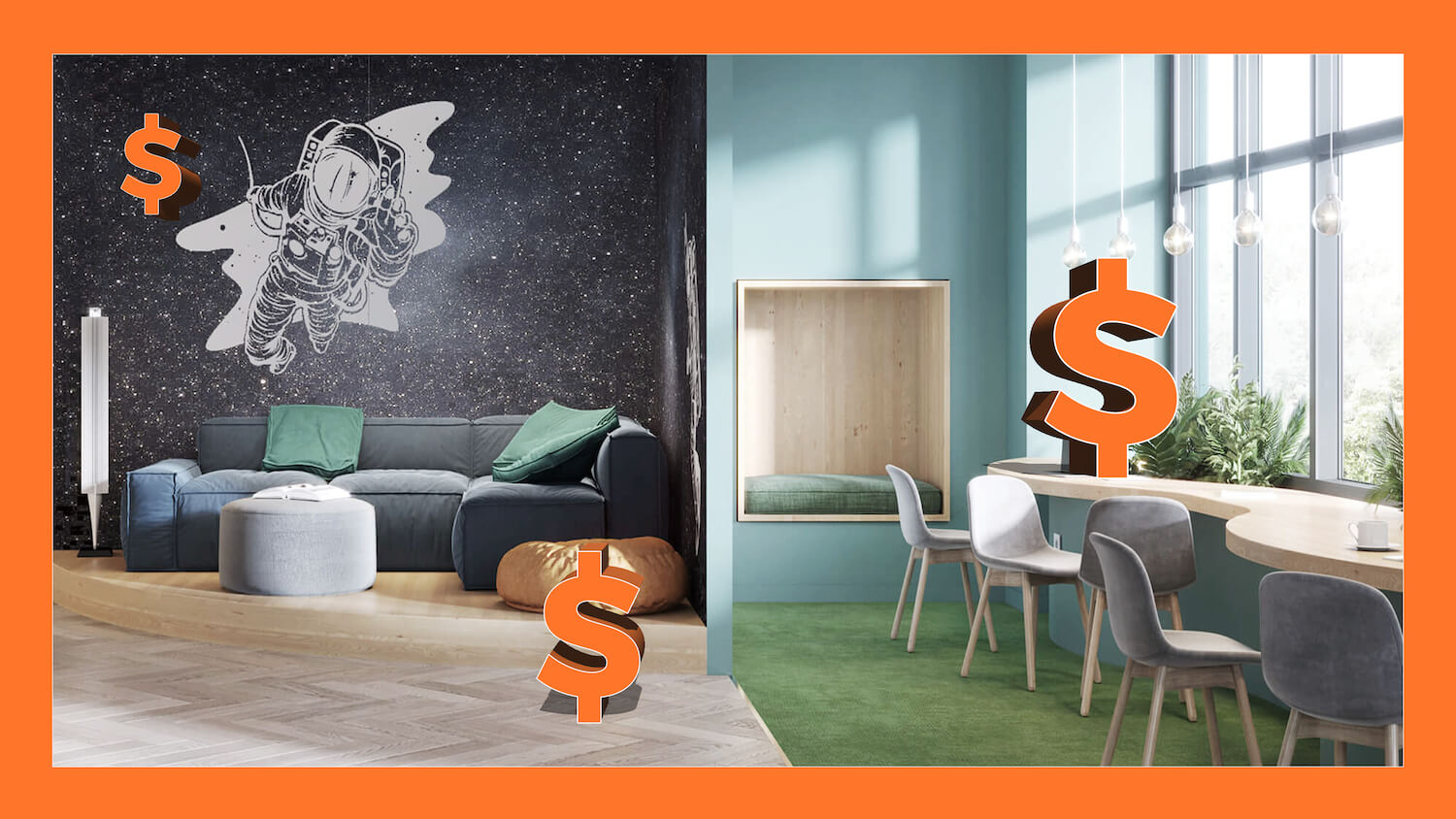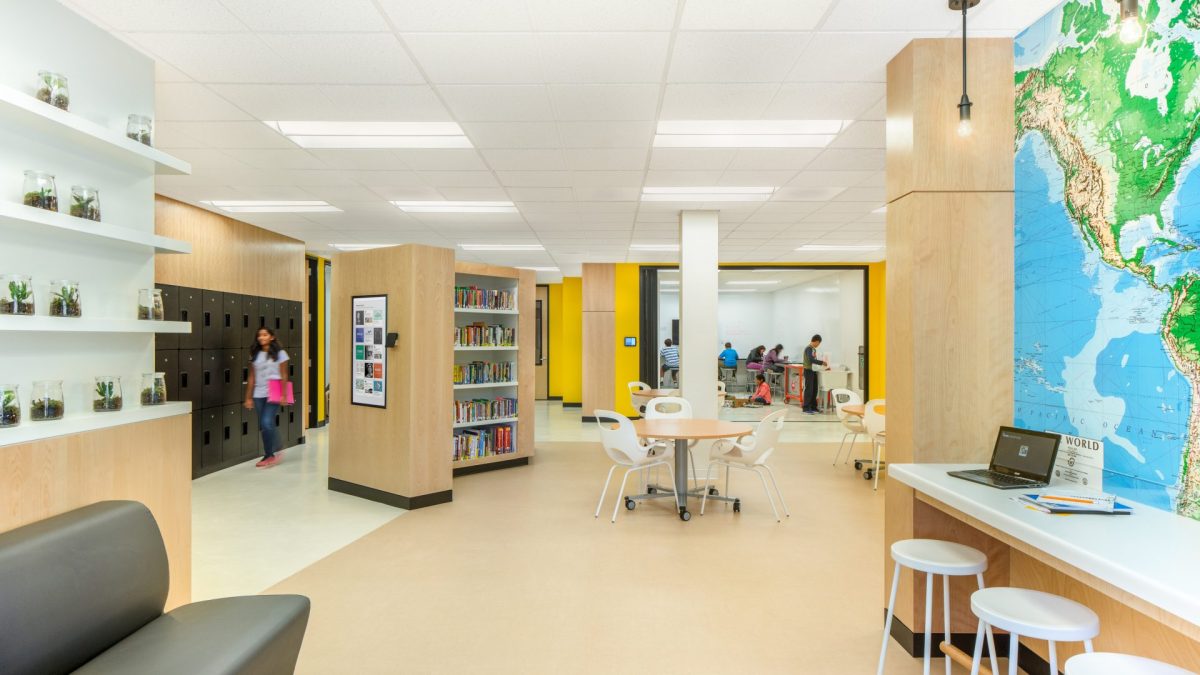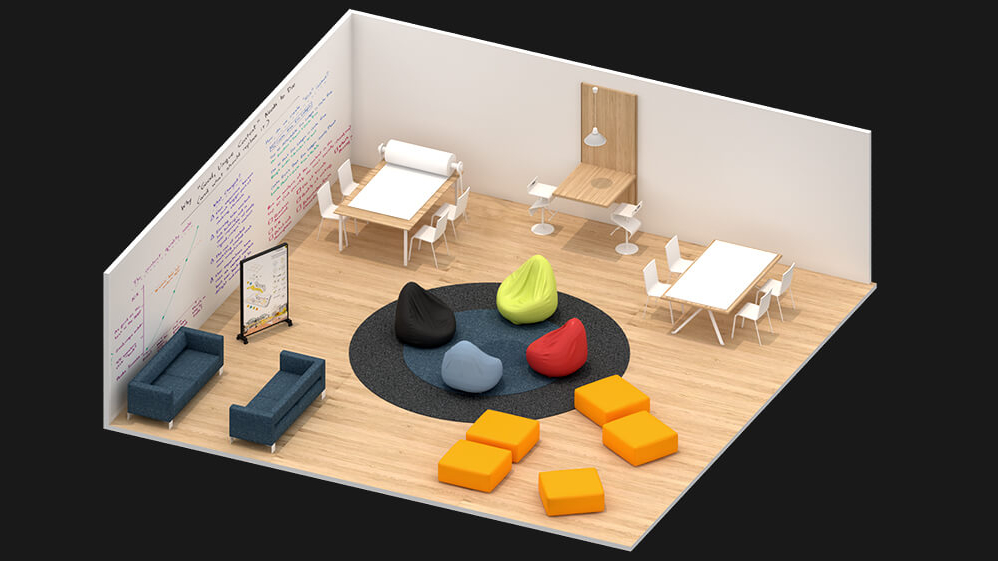Renovating a space or constructing a new building is complex. To successfully manage the project, you need to understand the costs involved.
Right now, you might be wondering:
- How much will it cost to build a new building?
- How much does renovation cost, compared to new construction?
- How much does an architect charge?
- How much should I budget for a construction project?
From construction labor and materials to services for architecture, engineering, and interior design, there are a range of ‘hard’ and ‘soft’ costs to consider.
This guide will give you insights and help you navigate budgeting a construction project. Let’s dive in.
Getting started with budgeting your construction project
Hard vs. Soft costs
At the heart of construction budgeting lies the distinction between ‘hard’ and ‘soft’ costs. Hard costs relate to the physical construction of the building. This includes the expenses for materials, labor, and the furnishings necessary to bring the designs to life.
With soft costs, think of them as the support system for the hard costs; they include architectural, engineering, and project management fees, plus the costs of the entitlements and permits required to begin construction.
You might be wondering: What’s the ratio of hard vs. soft costs on a construction project? This fluctuates based on the project’s type (because schools and hospitals are harder to design than corporate offices, they have higher soft costs, for example), its complexity (the more stakeholders you need to incorporate, the higher the soft cost), and its size (larger projects may afford you an economy of scale on both soft and hard costs).
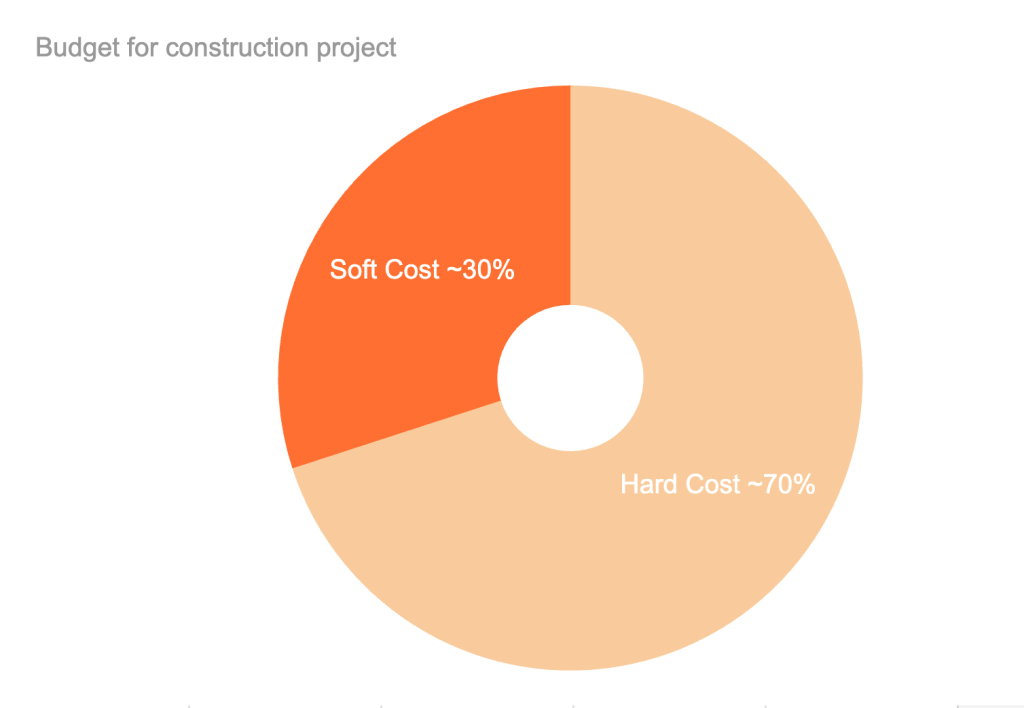
As a starting point, assume a 70/30 split. 70% on hard costs and 30% on soft costs. So, if you have a budget of $1 million, around $700,000 goes towards construction and $300,000 for design, engineering, and permitting. Hard costs for building materials and labor will generally make up the bulk of your project’s cost.
Recognizing the balance between these costs is essential for accurate budgeting and to avoid unexpected financial surprises. An accurate budget will give you a clear picture of the total investment required to start a construction project.
Importance of estimating construction costs
Estimating construction costs is not merely a matter of allocating budgets; it’s about managing expectations and risks. If you’re building on behalf of an organization, it’s critical that you understand the full scope of expenses. It helps in securing adequate funding, whether from investors, donations, or public resources.
Whether the project is for yourself or your organization, comprehensive cost estimation sets a realistic framework for your project scope, timeline, and quality. It also influences decisions on material selections, design complexities, and the choice between temporary solutions or long-term investments.
Estimating costs aids in effective communication with the construction team, architects, and designers, ensuring that everyone is on the same page regarding financial constraints and project objectives. Ultimately, a well-defined budget acts as a safeguard against cost overruns, which could potentially derail your project.
Understanding the hard costs
Variables affecting construction hard costs
Hard costs in construction projects are shaped by several variable factors. Geographic location impacts hard costs, with urban areas typically having higher labor rates compared to rural settings. The current state of the market also fluctuates, influenced by supply and demand, which can lead to unpredictable changes in material pricing.
Your project’s scale affects the quantity of materials needed and the time required for completion, both of which alter the overall budget.
Say you need 10,000 square feet of space. Building it all on a single story may be cheaper than building it on multiple floors. While you’ll spend on a larger roof area and possibly more land to have it all on one level, you’ll not have to pay for stairs, elevators, and as much structure.

These are useful discussions to have with your architect. Early involvement of an architect can help you define goals, prevent costly mistakes, and provide valuable insights for the project.
When budgeting, it’s important to account for variable factors to ensure that hard costs are estimated with a degree of flexibility, allowing for adjustments as the project evolves from concept to construction.
The market influences builders’ fees
The builder’s fee, which makes up a large portion of your hard cost, is highly sensitive to market conditions.
Economic factors such as inflation, interest rates, and employment levels can cause these fees to fluctuate. In a booming economy, the demand for builders increases, often resulting in higher fees due to the competitive landscape for skilled labor. Conversely, during economic downturns, a surplus of labor might lead to more competitive pricing.

Local market conditions, including the availability of contractors and the level of construction activity in the area, also play a crucial role. For example, in fast-growing cities, builder’s fees might spike due to the increased demand for rapid construction and building efforts.
Understanding these market influences is crucial for anyone looking to start a construction project, as they directly affect the financial feasibility and timing of development.
Material prices fluctuate
Material costs are a pivotal factor in the equation of hard costs, but they are far from static. Prices for key construction materials such as steel, lumber, glass, and concrete can swing dramatically based on global economic trends, trade policies, and resource availability. Natural events like severe weather or environmental shifts not only impact the availability and thus the cost of raw materials but can also disrupt supply chains, leading to increased prices and project delays.
Understanding these fluctuations is necessary for designers and cost estimators to provide accurate estimates and timelines. Proactively monitoring material pricing trends can help in budgeting appropriately and deciding when to lock in prices with suppliers to mitigate the risk of escalating costs during the construction phase.
Construction cost per square foot
Hiring an architect or general contractor to perform “pre-con” (which stands for pre-construction work) is a good way to estimate the cost for a construction project. They’ll show you a cost estimate for construction based on their experiences and data from previous projects of a similar size, quality, and location.
Cost estimates for construction are typically presented in a cost per square foot format (cost/SF). That means, how much each square foot of space will cost to build.
For instance, if you have an interior renovation project, the architect or general contractor may estimate between $150 and $300 per square foot. Where you land in that range depends on the level of renovation you’re after—simply updating finishes or moving walls, ducts, and plumbing? For a ground-up, new building, you may see estimates come back between $500 and $700 per square foot.
To figure the construction cost of your project, multiply this cost/SF number by the size (square feet) of your project.

Say you want to do a gut renovation of a 5,000 square foot space—with a fresh floor plan, upgraded finishes, and new HVAC system, plumbing fixtures, and lighting—and the architect or cost estimator ballparks the construction cost around $300 per square foot. Multiply $300 x 5,000 SF and your cost is $1,500,000.
That’s a rough estimate for what you’ll pay the general contractor. In a moment, you’ll see how other hard costs, like furnishings, and soft costs need to get added on to build your overall budget.
Remember the hard cost of furnishings
Estimating the added hard cost for furnishings and equipment is an integral part of a construction budget. This is where you account for the loose items that you’ll bring in to furnish the space, which aren’t provided by the general contractor.
Collaborating with an architect can aid in gauging these expenses. For instance, in school building projects, for every 1,000 square feet of space, we estimate $25,000 to purchase essentials like durable tables, chairs, soft seating, necessary equipment, and up-to-date technology.

Hold a separate line in your budget for furnishing expenses (commonly referred to as an “FF&E” budget, although that’s a misnomer since it stands for furnishings, fixtures, and equipment, but fixtures like kitchen sinks and lights are usually already included in the general contractor’s cost). Including the furnishing cost provides a more realistic picture of your expenses, ensuring you’re well-prepared for the financial commitment your project entails.
Demystifying soft costs
How architects fees work
Your architect will act as the conductor who orchestrates all of the disciplines—interior design, lighting, landscape, furniture, acoustics, signage, engineering, construction—to bring your vision into a three-dimensional reality. As such, architect’s fees are a significant part of soft costs.
Fees vary widely based on the architect’s skill and reputation, the breadth of services they provide (Not all architects provide equal services—for example, one may provide furniture specification while another doesn’t), and your project’s complexity.
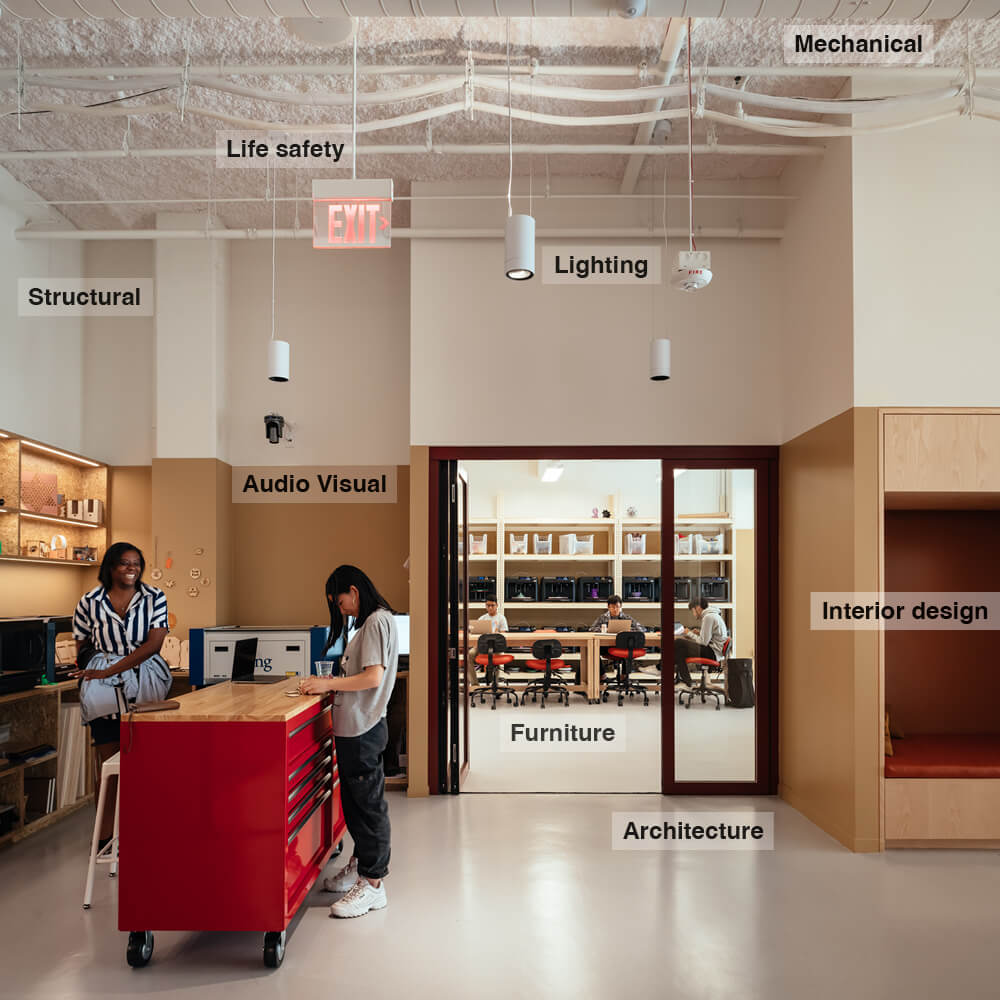
Typically, architects charge in one of three ways: a fixed fee, a percentage of the construction cost, or hourly rates. It’s crucial to understand these fee structures and how they can impact your budget and peace of mind.
Architects who charge based on a percentage of the construction cost, might feel incentivized to increase your construction costs as the project progresses, thereby increasing their own fee. Maybe you prefer an architect offering a fixed fee, so you know exactly what you’ll pay and eliminate the uncertainty that comes with variable fees like percentage-based or hourly.
The architect’s skill, services, and fee structure are important to consider when comparing architects, as these will influence the experience you have during the project and the final outcome of your space.
Comparing architects’ services
Comparing architects is about more than just fees—it’s about value.
While cost is a critical factor, the initial design fees are minimal compared to the cost savings in construction and the avoidance of future issues. So, consider the long-term value provided by the architect.
Architects offer varying levels and quality of service, from basic floor plans and elevations to thoughtfully considered designs with 3D visuals, material samples, and involving you in the process. Some may be experts on certain types of buildings, such as homes or schools, while others might focus on sustainability or have a unique approach.
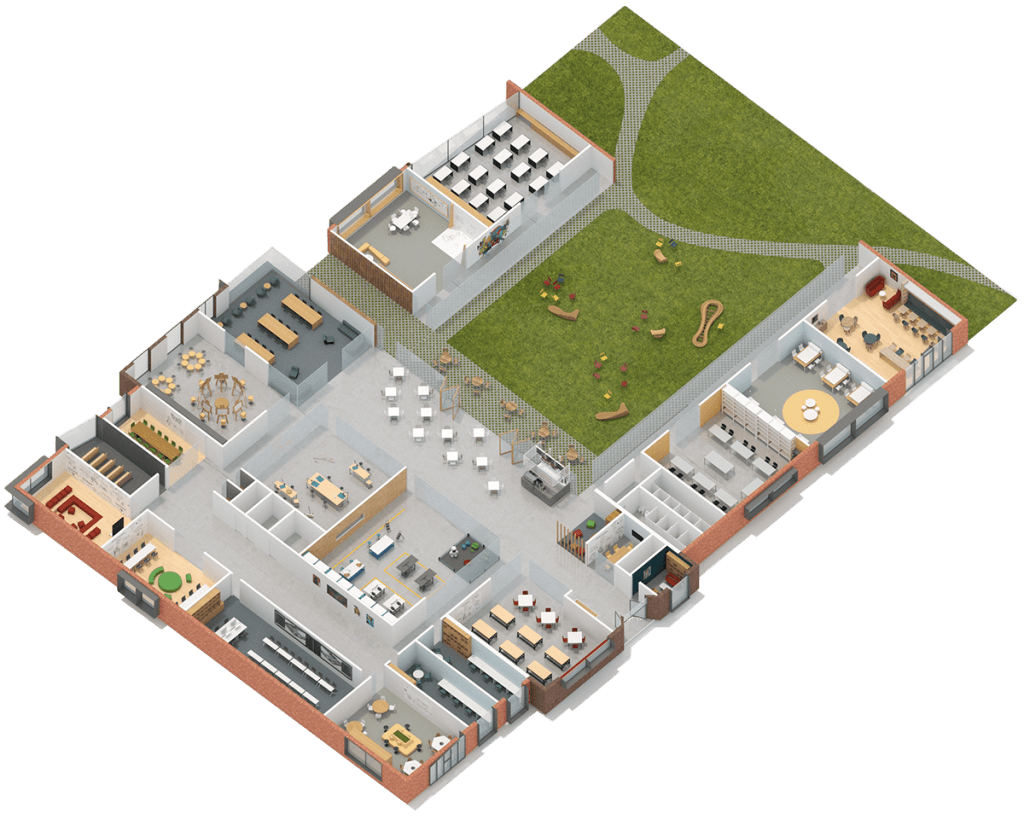
It’s essential to evaluate the breadth of an architect’s offerings, their past project successes, and the depth of their expertise. An architect who consistently delivers spaces that positively impact occupants can be an valuable asset, creating lasting value that trumps any initial project costs.
Architects who provide comprehensive services, including scenario planning and construction management, can streamline the process, reducing potential stress and costs. Weigh these factors to find an architect whose services best align with your project’s specific needs and goals.
Designers and engineers are necessary when building
In addition to the architect, designers and engineers are typically necessary for completing a project.
These professionals—such as lighting and interior designers and structural, mechanical, and electrical engineers—bring expertise that ensures the building is not only aesthetically pleasing but also structurally sound, safe, and compliant with regulations. Their services may include preliminary studies, design drafts, detailed plans, and oversight during construction.
If you’re taking on a renovation or interiors project, save some budget for interior and lighting design, furniture selection, and MEP (mechanical, electrical, plumbing) engineering. Other disciplines of engineering, like structural, audio-visual, and IT, may also be needed on large renovation projects.
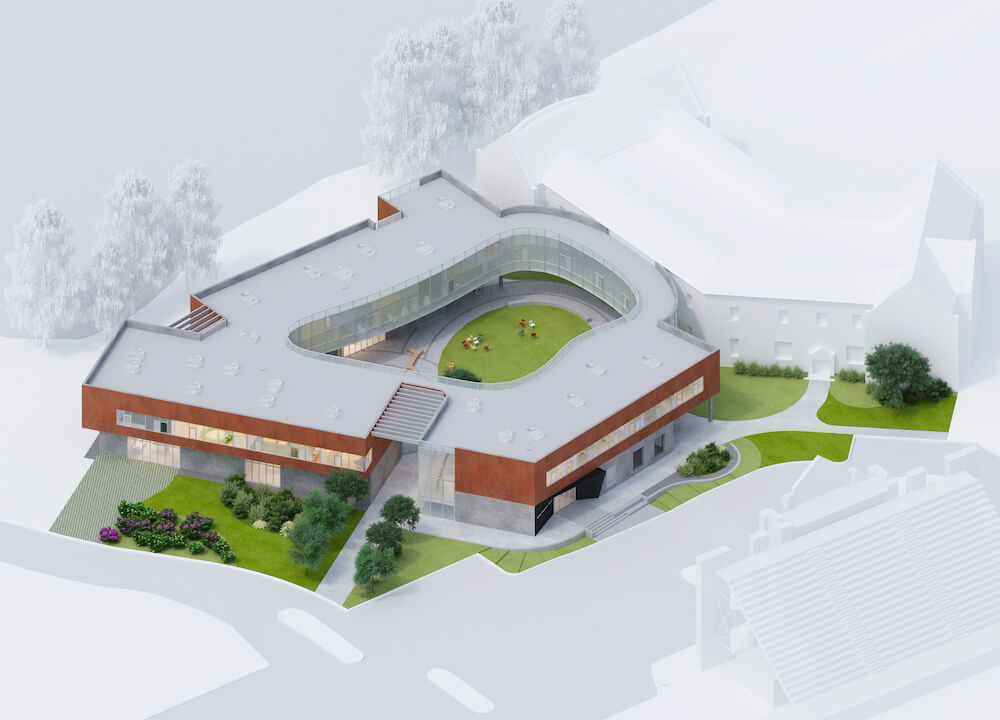
To create a new building, you’ll need more professionals. This will likely include, civil engineering, landscape architecture, code consulting, and fire protection—to name a few. You might also need services like geotechnical engineering, facade, energy, or sustainability consulting.
Even though these services come at a cost, they’ll add to the functionality, user experience, and performance of your space. Factor in these benefits when budgeting for them.
Building permit and entitlements
For projects with a scope beyond minor interior renovations, the requirement for building permits and entitlements needs to be factored into your soft costs. The procedures for obtaining a building permit and entitlements, as well as their associated fees, vary city to city.
Cities require building permits to ensure that your construction adheres to health, safety, and building code standards. The size of the project influences the number of inspections required, which dictates the cost of permit fees. The value of the project also impacts the permit cost, with higher project values leading to more expensive permits. Additionally, the urgency of the project can influence permit costs, with some city building departments charging additional fees for expedited processing.

Budget Template for Construction Projects
Need help building your budget and managing your project? Download our free Budget Template.
Along with a building permit, you may need additional permits, like a Conditional Use Permit (CUP) if you want to use your property for a type of occupancy it’s not zoned for, or entitlements for concerns like environmental or historic preservation.
Work with an architect or permit expeditor early on in the process to determine which permits will be required for your project. The time and money needed to secure permits and entitlements should be factored into your schedule and cost estimate. Understanding the permit rules specific to your area can prevent unexpected costs, delays, or legal challenges as your project moves ahead.
Hiring a second project manager
During a design and construction project, your architect should be serving as the project manager, ushering the process along and providing you with updates. Sometimes people consider hiring a second (external) project manager, often referred to as an “Owner’s Rep”. Whether or not it’s a wise move for you depends on several factors.
First, ask your architect about the project management services they provide. If you overlook this and fail to ask, you could end up paying a project manager to perform tasks already included in your architect’s scope of work. That’s redundancy and a waste of money.
Ask if your architect can assist you in soliciting bids from general contractors, scrutinizing the construction estimates, managing the construction process, and reviewing builder invoices. If they offer these services, a separate project manager may not be necessary.
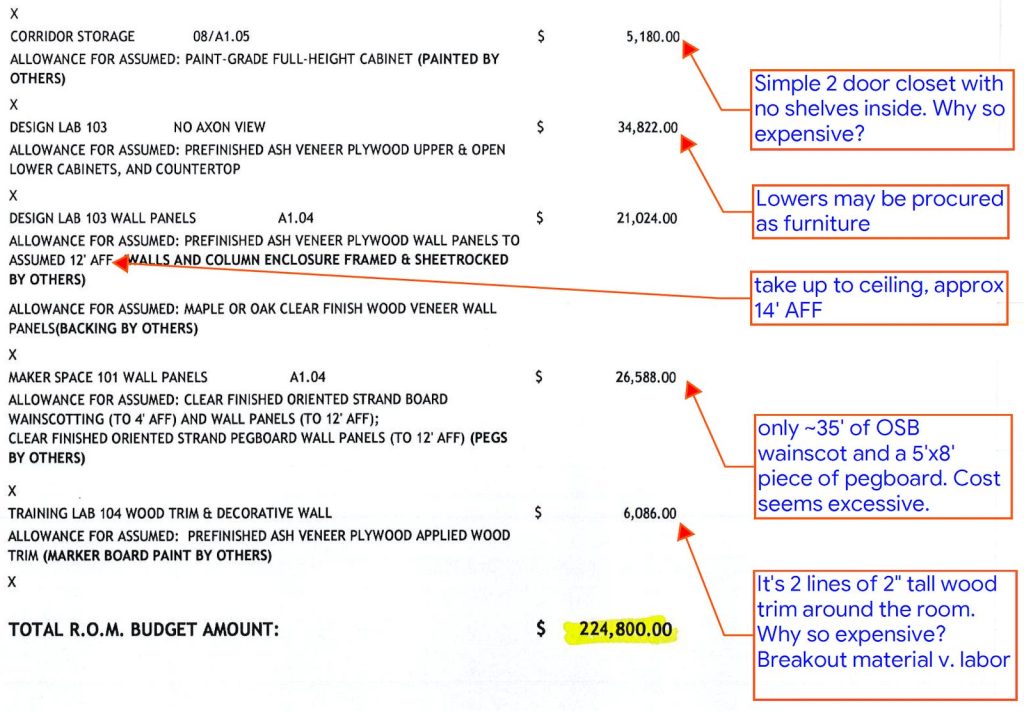
Second is the scale and complexity of your project. For projects under a certain value—say $10 million—it may not be financially viable to hire a project manager, as their fees could be $10,000 per month or more. Over the span of a 18 to 24 months project, having a second project manager can leave you with a considerable bill ranging from $180,000 to $240,000.
Third, consider if you want to invite another cook into the kitchen. Introducing an additional project manager means incorporating another voice in the process, which could result in disagreements or delays. Some people prefer having this additional opinion, while others trust their architect to protect their interests and prefer a more nimble, streamlined team.
Working with your architect
Look for a complete package
Hiring an architect that offers a broad range of services—including interior and lighting design, furniture selection, signage and graphics, and project management—can greatly streamline the process and enhance your final result.

This saves you the hassle of hiring other professionals (who you will need) and ensures smoother, coordinated operations. A unified team minimizes misunderstandings and can more effectively execute the design concept through the construction phase.
With fewer contracts to oversee and less coordination, it saves you time, reduces administrative costs, and keeps the project on schedule and within budget.
Even though engaging an all-in-one firm might require a slightly higher initial investment, the advantages they offer and the superior results they deliver make this investment worthwhile.
Expect more than drawings
While understanding the cost structures associated with architects is essential, it’s equally important to analyze the quality of services you’re receiving for those costs. Don’t be swayed by low-cost offerings with limited services.
In architecture, cheaper doesn’t equate to better. Instead, focus on the value you’ll gain from the architect’s expertise and the level of engagement they offer.
An architect who respects your needs and actively involves you in the design process is truly invaluable. An exploratory approach to design, where you and your stakeholders are engaged in interactive workshops, is a hallmark of high-quality architectural service.

This collaborative process encourages deep introspection about your spatial needs, allowing the design to be tailored to your exact requirements. An architect should be a catalyst, prompting you to question your assumptions and make thoughtful decisions that will shape your project’s success.
Advanced visualization techniques such as 3D renderings and VR experiences can give you a comprehensive understanding of the design before it’s built. They allow for preemptive feedback and changes, minimizing the risk of costly construction alterations down the line.

Apart from providing an optimal design, a committed architect will support you throughout the project journey—from choosing the right builder, establishing a construction contract, deciding on furnishings, to keeping you informed about the project’s status through frequent communication.
When comparing costs, be sure to assess the breadth and depth of services provided by an architect. Remember that investing in superior architectural services can lead to a more fulfilling project outcome, making it a worthy expenditure in the long run. The true value of architecture lies not in its cost, but in its power to shape our environment, influence behaviors, and enrich lives.
Quality service is worth the higher initial cost
The adage “you get what you pay for” certainly holds true in the realm of architecture and construction. Opting for a design firm with a higher initial cost can be a wise investment. Quality service from a thoughtful architect can result in a more durable, timeless, and adaptable design, which can reduce long-term expenses for maintenance and renovations.
Such firms typically have a network of trusted suppliers and contractors, which can mean access to better materials and workmanship. They also tend to have a robust project management process in place, which can prevent costly oversights and errors.
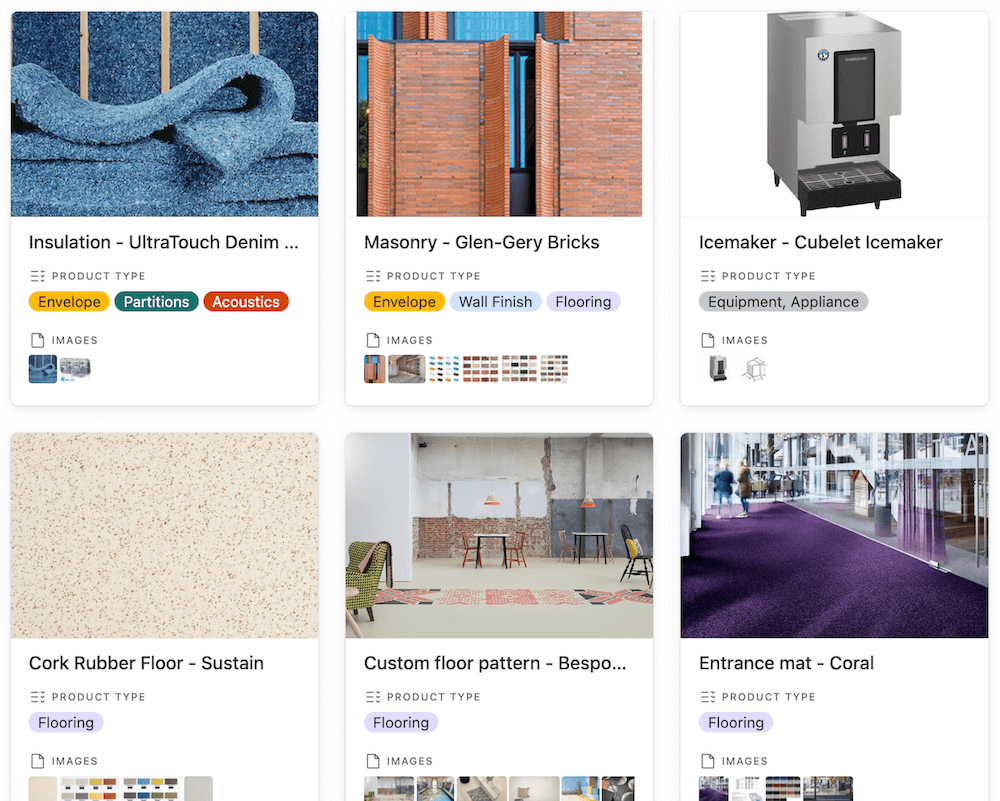
While the upfront cost may be higher, the value added to the project in terms of design excellence, project efficiency, and risk mitigation can far exceed the additional initial outlay. It’s essential to consider these long-term benefits when evaluating the cost of architectural services, as they can have a significant impact on the overall success and sustainability of the project.
Budget comprehensively and hire great professionals
Understanding budgets is vital for any design and construction project. This means knowing both hard and soft costs to realistically plan your budget, manage what’s expected, and lower any financial risks. But the true meaning of architecture isn’t just about cost, it’s about how it influences and improves our daily lives. Good design is a worthy investment, improving quality, usability, sustainability and looks.
Spending money on an expert architect is money well spent. It elevates your project’s potential. Picking a well-rounded architecture firm ensures your project is undertaken with careful attention, professionalism, and innovation, delivering more than you expect.
Building or renovating doesn’t need to be stressful. With the right budgeting, smart choices, and the support of exceptional designers, it can be an exciting experience. It’s your chance to create a place that is uniquely yours and enhances lives.
